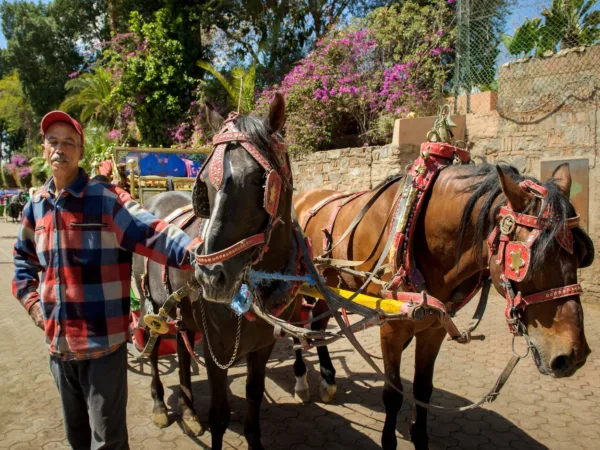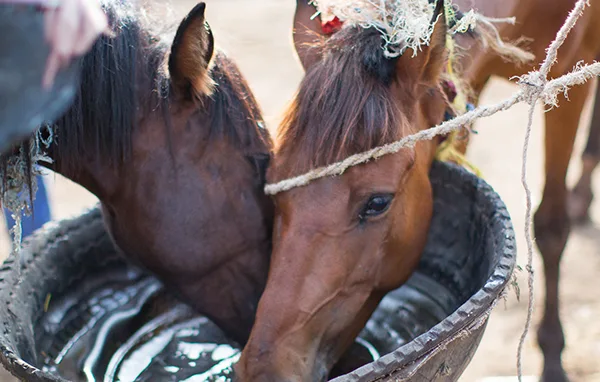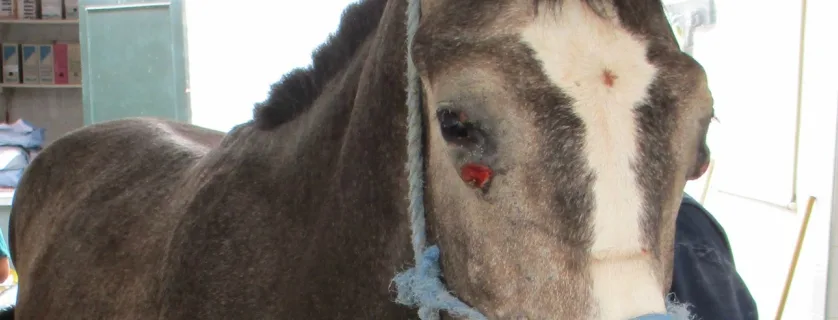
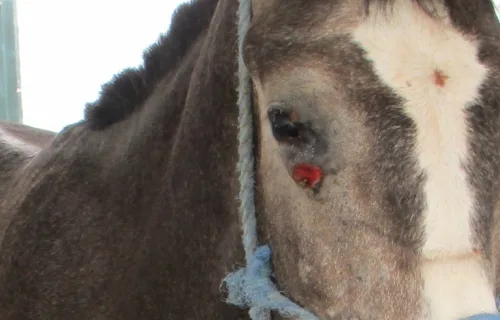
Helping Harry the horse
Read how newly-qualified vet Harriet helped to treat Harry the horse’s mysterious wounds while she volunteered with SPANA’s teams in Morocco.
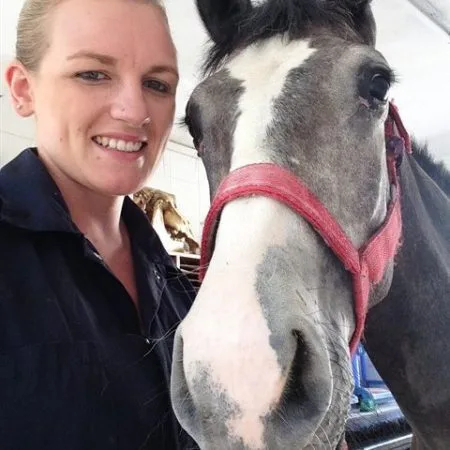
Harry was one of the first cases I was involved with on arrival in Morocco. He had large lumps around the inside of both eyes, and a large wound on his pastern (above the hoof). Whilst myself and the other English volunteer vet (Pip) were contemplating what could have caused such lumps, the head vet at Marrakech, Dr Boubker, recognised quickly the problem was most likely to be Habronemiasis.
This is an interesting disease caused by a parasitic worm that for the most part lives in the horse’s stomach. It is present all over the world, but we rarely see this form of the disease in the UK. However, in Morocco it is relatively common!
The life cycle of the parasite is quite strange – from its home in the horse’s stomach, it sheds eggs, which pass through the digestive system and out in the faeces. These eggs develop into tiny larvae, which are eaten by certain types of fly. The larvae then develop inside of the fly, and are deposited on the horse when the fly feeds, for example on a wound, on saliva around the mouth or on the tears in the corner of the horse’s eye. The larvae have to be swallowed to make it back to the stomach and complete the life cycle. The parasites cause relatively little damage in the stomach, but if they get into open wounds or the eyes, they can cause a big reaction in the skin resulting in the sorts of lumps that Harry had.
Getting rid of the actual worm is easy – it just involves two injections of an anti-parasite drug, given two weeks apart. However, the lumps would not go away on their own, so we had to do surgery to remove them, allowing the tissues underneath to heal normally. Pip was in control of the anaesthetic, and Dr Boubker and I went to work removing the lumps. Dr Boubker did the delicate surgery around the eyes, being careful to preserve normal function of the eyelids, and to not damage the tear ducts, whilst making sure all of the abnormal tissue was removed.
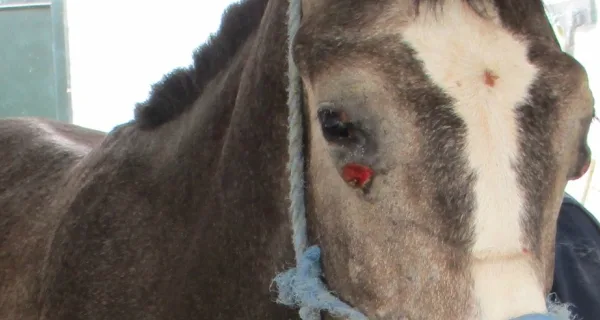
I was put in charge of removing the lump on his pastern – a very exciting prospect for me, freshly qualified and with a passion for surgery! Once I’d removed all the abnormal tissue, the wound was too big to suture shut, as expected. We bandaged it, and placed a mask over Harry’s eyes to keep the flies away. Harry recovered from the anaesthetic well, and when I left Marrakech, he was making a great recovery. The wound on his pastern was healing nicely, albeit quite slowly, but this is quite normal for wounds on the lower limbs. The wounds under the eyes healed very well, and his face was soon back to its previous charming form.
Harry was one of the best patients I’ve ever had – at only four years-old, he was much better behaved than I ever expected! He tolerated the daily cleaning of his eyes, regular bandage changes, and flushing of his tear ducts incredibly well, and only needed entertaining with a tickling of his muzzle and the prospect of a carrot when we were done. He was a very sweet and handsome boy, and I often thought how much fun I could have with him if I owned him back in England. I even contemplated asking the owner how much he wanted for him! However, I don’t think my boyfriend or family would be too impressed if I brought back a horse, never mind trying to get him through border control!

